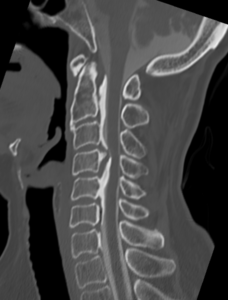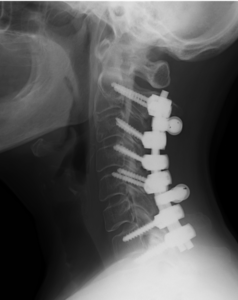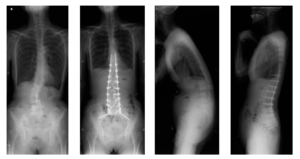Ossification of the Posterior Longitudinal Ligament (OPLL), Yellow Ligament Ossification
2022年5月3日
最終更新日時 :
2023年10月27日
 webmaster
webmaster
We will provide information on surgical methods, length of hospital stay, insurance coverage, and more for posterior longitudinal ligament ossification (OPLL) and ossification of the ligamentum flavum (OLF).
後縦靭帯骨化症、黄色靭帯骨化症
What is posterior longitudinal ligament ossification (OPLL) and ossification of the ligamentum flavum (OLF)?
When ligaments called the posterior longitudinal ligament (anterior) in the case of the cervical and thoracic spine, and the ligamentum flavum (posterior) in the spinal canal become thickened and ossify, pressing on the spinal cord from both the front and back, it can lead to spinal cord-related symptoms. These conditions are respectively known as posterior longitudinal ligament ossification (OPLL) and ossification of the ligamentum flavum (OLF). Posterior longitudinal ligament ossification is more common in the cervical spine, while ossification of the ligamentum flavum tends to occur in the thoracolumbar junction.
These conditions are recognized as specified diseases by the Ministry of Health, Labour and Welfare and may qualify for public medical expense coverage, so it is advisable to inquire with your local government or healthcare institution.
These conditions are recognized as specified diseases by the Ministry of Health, Labour and Welfare and may qualify for public medical expense coverage, so it is advisable to inquire with your local government or healthcare institution.
symptoms
When spinal cord compression progresses, it can lead to pain in the neck and shoulders, numbness in the hands and legs, difficulty with finger movements, and walking difficulties. The cause is unknown, but it is more common in middle-aged Asian men and often occurs with diabetes. Additionally, some patients may have genetic predispositions. If you experience difficulty moving your fingers or encounter walking problems, surgery is necessary, so early consultation is recommended.
Treatment methods
The diagnosis is made when MRI and CT images show nerve compression due to ossification within the spinal canal, consistent with the symptoms.
Smaller ossifications are often asymptomatic, and in such cases, observation and monitoring may be sufficient.
Surgical procedure
There are surgical procedures available to remove or thin out ossified ligaments, relieving compression on the spinal nerves. (Ossification of the ligamentum flavum resection, cervical anterior fusion)
Depending on the type of ossification, additional fixation using implants may be performed. (Cervical and thoracic posterior fusion) In cases of thoracic ossification of the posterior longitudinal ligament, simply performing a fusion procedure can also alleviate spinal cord compression. (De kyphosis surgery)
Depending on the type of ossification, additional fixation using implants may be performed. (Cervical and thoracic posterior fusion) In cases of thoracic ossification of the posterior longitudinal ligament, simply performing a fusion procedure can also alleviate spinal cord compression. (De kyphosis surgery)



-300x170.png)